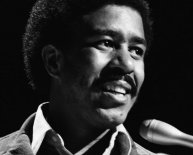
Boy Scout California Store Palo Alto
The trip coordinator collects the money for the trip and gives each patrol cook enough to pay for the food he has to buy - and staying within budget is one of the requirements for patrol cook. One way to stay within budget is to "be prepared" and purchase some basics that you should have on hand that don't necessarily get included in the food budget (see the shopping list below). Another way is to cook things yourself at home ahead of time rather than buying more expensive packaged goods (e.g. make muffins from scratch or a mix rather than buying bakery muffins).
Scouts on a trip usually bring bag lunches for the first day and money for a meal or snack on the way home, so the patrol cook is responsible only for the meals "on site" during the actual campout.
Everyone in the cooking group helps carry the stove, cooking pots and utensils and food items. The patrol cook doesn't have to do ALL the work - the patrol should all help and each does his own cleanup and shares in the cleaning of the pots and the site.
What kind of trip is it?
- car camp: no hiking into the campsite is required, weight and storage of the food is not a big issue - heavy canned foods and perishables that must be kept cold are OK. Troop-supplied one-burner stoves are available for check-out by the patrol cook, and if an ambitious meal is planned, more than one stove per cook may be checked out, if available.
If there is a barbecue pit, the cook can take charcoal (scouts are not allowed to use lighter fluid on BSA campouts, so a charcoal chimney to assist in lighting the charcoal or "Matchlight" charcoal is recommended). If the camp ground has wood for sale or allows fallen wood to be gathered and burned, a campfire can be used.
- hike-in camp with water available: all food must be carried (weight MUST be kept down) and perishables kept to a minimum (no coolers, no milk!). Again, if wood is available and fires are allowed, some meals can be cooked over the fire, but troop stoves (ONE per patrol) are the rule.
- hike-in camp without (purified) water: same as for the previous hike-in camp, but water must be carried as well and/or water filters and/or water purifying tablets must be carried. The Troop has a water filter, but each scout should have his own purifying tablets in any case. Again, weight must be kept at a minimum.
Basic Supplies:
There are a number of camp cooking supplies it is handy to have on hand:- Foil - the heavy duty kind is better for cooking over the fire.
- Zip-top plastic bags - go to Cost-Co or Price Club or look for them on sale at the discount grocery store. Buy the freezer weight rather than regular. You need the gallon, quart and sandwich sizes and they are indispensable!
- Garbage bags (not just for the patrol cook!) - get a roll of the big (again heavy duty ones are preferable) trash bags.
TIP: get trash compactor bags - they are heavier-weight. Each scout is supposed to carry two plastic trash bags on all overnighters - for garbage, but also useful as an impromptu back-pack cover, poncho or ground cloth in case of rain. - Campsuds - any biodegradable soap suds - re-bottle into a small plastic bottle with "just enough" for the trip. Pack in baggie with a cut-in-half sponge with the green scrubber backing.
- Paper towels - a whole roll is great to have along.
TIP: (I know this is difficult, but worth the trouble) cut [saw!] the roll in half so it will fit into a gallon baggie to keep clean and waterproof. - Strike anywhere matches - a big box, in a baggie.
- Large light-weight plastic or metal bowl. The troop has camp pots and pans and some cooking utensils, but it is nice to have a bowl along to serve food in. Also large plastic or wooden serving spoon. An inexpensive serrated knife is also nice to have on hand (in cardboard sheath for carrying).
Food Supplies:
These are some things to have on hand in your kitchen at home - you will use them on almost every trip...TIP: keep packaging to a minimum. Save space and weight by throwing away the box and taking just the insides (remember to tear off/cut out cooking/mixing instructions, tape to outside of package or put in baggie with food). Remember everything (garbage) has to be packed back out!
- Hot chocolate mix (either prepackaged or measure out enough for each person in a baggie).
- Hot cider mix (nice alternative to hot chocolate).
- Instant Oatmeal (the flavored kinds! Don't need sugar if pre-flavored, can add a teaspoon of powdered milk, raisins, etc.)
- Salt and Pepper - "picnic" set or in empty film canisters. Spices - again, a few favorite spices in film canisters or other small water-tight containers (garlic powder or salt, seasoned salt, rosemary, dill, thyme)
- Powdered milk
- Bisquick
Adult Cooking: Don't forget the coffee (plus sugar and coffeemate)! Instant coffee is not generally recommended - either use a Coffee Press or a Melita cone and filters or individual coffeebags (and tea bags for the tea drinkers). You can make your own coffeebags with fine-ground coffee, filters and a stapler (tip courtesy of Unit Commissioner, Chuck Enderby).
Recipes:
There are LOTS of sources of good camp cooking recipes on the Web. Some can be found at:Back to top of page
Before you even start on your menu, it is wise to contact the other scouts in your cooking group and find out if any of them have food allergies, religious prohibitions to eating certain foods or absolutely hate some foods. You don't have to get their approval for your menu, but you do need to make sure you bring food that everyone can eat (or have a alternate choice for someone who can't eat one dish). TIP: bring your menu with you in a waterproof sheet-protector.
Make the menu, then the list of what you have on hand versus what you need to purchase. List separately things that need to be kept cold. Refer to the lists when packing and pack cold things together (in the cooler in a car-campout, but if on a hike-in, cold items need to be re-packed at the trailhead to fit into the backpacks. Instead of using ice to keep perishables cold, freeze meat in plastic bags to be used on the second day and use the frozen meat as "ice." Paper is a good insulator, so wrap the cold food in newspaper and/or paper bags (which can be used to help start the campfire).

















